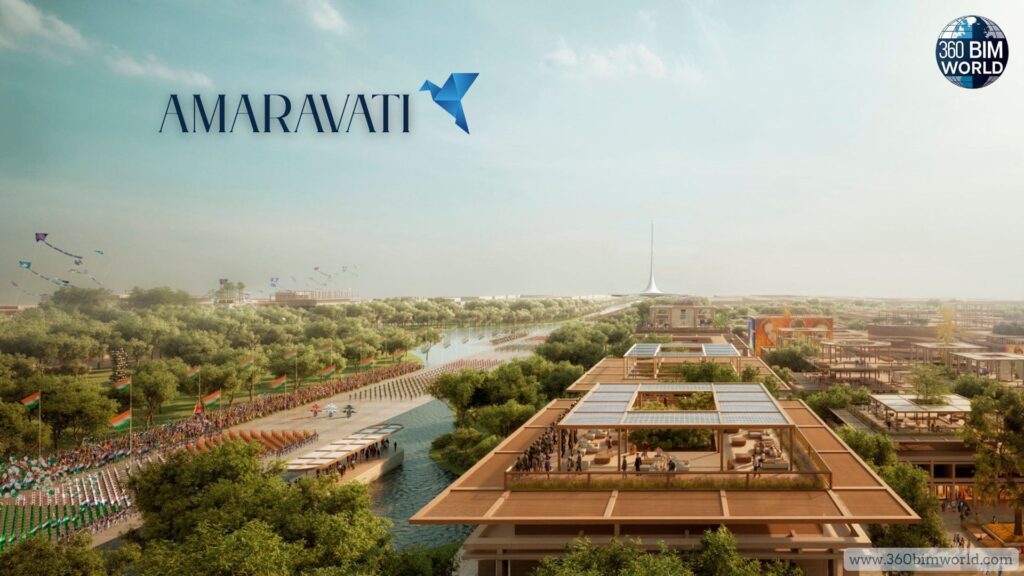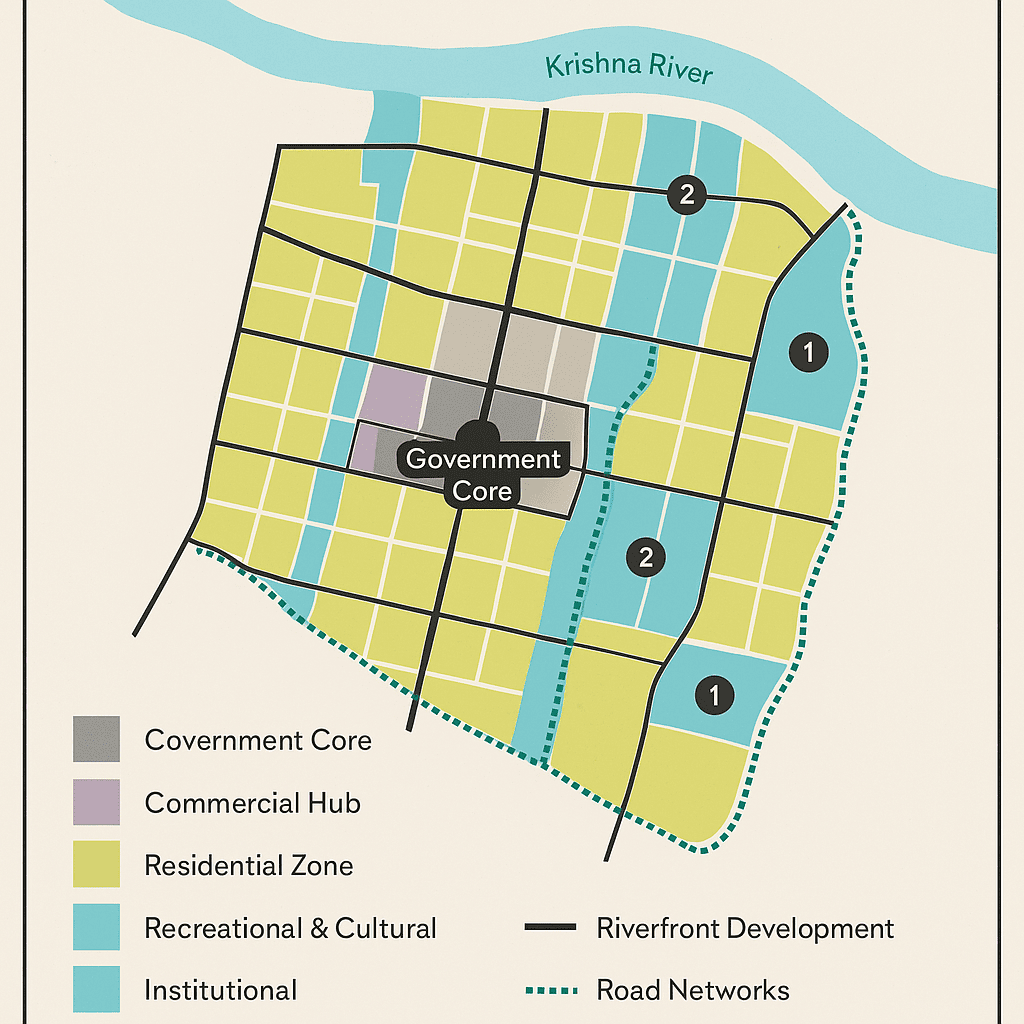Amaravati: A Capital Born from Necessity
Andhra Pradesh, a state with a rich history and dynamic future, is once again buzzing with excitement over its capital city: Amaravati
After years of uncertainty and stalled progress, this ambitious greenfield project is experiencing a remarkable resurgence, poised to become a beacon of modern urban development in India.
The need for a new capital arose from a pivotal moment in India’s history – the bifurcation of Andhra Pradesh in 2014. With Hyderabad becoming the capital of the newly formed Telangana, the residual Andhra Pradesh found itself without a central administrative hub
A unique Land Pooling Scheme (LPS) was instrumental in acquiring approximately 33,000 acres of land from nearly 30,000 farmers.
The Stalled Dream: A Period of Uncertainty (2019-2024)
However, Amaravati’s journey was far from smooth. A change in state government in 2019 brought a controversial “three-capital plan,”proposing to decentralize administrative, legislative, and judicial functions across different cities. This abrupt policy shift led to a five-year hiatus in Amaravati’s development, turning it into what some dubbed a “ghost capital”.
The legal battle also intensified, with the Andhra Pradesh High Court ruling in March 2022 that Amaravati should remain the sole capital. While the Supreme Court later stayed a strict completion deadline, the core legal affirmation of Amaravati’s status remained.

The Grand Revival: Amaravati Reborn (Post-June 2024)
The political landscape shifted dramatically in June 2024, with the return of N. Chandrababu Naidu as Chief Minister. His immediate declaration to reinstate Amaravati as the sole capital brought an end to years of protests and injected fresh hope into the project.
This renewed political will was quickly followed by concrete action. On May 2, 2025, Prime Minister Narendra Modi officially relaunched construction activities, laying foundation stones for projects worth over ₹58,000 crore. This includes a substantial ₹49,000 crore allocated for 74 key infrastructure projects, such as the Legislative Assembly, Secretariat, High Court, and housing for government officials.
Key Infrastructure & Future Timelines:
The development is now on an accelerated path with clear timelines :
- 2025: Completion of the APCRDA office, West bypass, and Outer Ring Road (ORR) notification.
- 2026: Officers’ housing towers, new Gannavaram airport terminal, and 70% of canals and flood works.
- 2027: Superstructures for the Assembly, High Court, and Secretariat, along with the initiation of the Quantum Valley and IT Tower.
- 2028: Full completion of Assembly, High Court, and Secretariat towers, and finalization of the Amaravati airport developer.
- 2030: Commencement of construction for the Amaravati airport.

Funding the Vision: Strong Financial Backing
- The state budget for 2024-25 has allocated ₹15,000 crore specifically for development.
- The World Bank approved an USD 800 million loan in December 2024 for the Amaravati Integrated Urban Development Program, focusing on trunk infrastructure, public transport, and flood mitigation.
- The Asian Development Bank (ADB) also approved a USD 788.8 million loan in December 2024 for infrastructure, green spaces, and low-carbon transport.
- The Central Government has released over ₹4,200 crore and committed ₹1,400 crore part of its ₹15,000 crore contribution for Phase I.
Sustainability and Future-Ready Initiatives
Amaravati isn’t just about buildings; it’s about building a sustainable future. Chief Minister Naidu has declared Amaravati will be developed as a “Green Hydrogen Valley,” positioning it at the forefront of India’s clean energy revolution.
Plans also include a
“Quantum Valley” powered by Artificial Intelligence (AI), with quantum computing operations set to begin by January 2026 in collaboration with tech giants like IBM, TCS, and L&T.
This vision is part of a broader ‘Towards Swarna (golden) Andhra Pradesh@2047’ blueprint, aiming to make Andhra Pradesh India’s leading state by 2047, with ambitious targets for GSDP and exports.
Addressing Challenges: Land Acquisition and Farmer Welfare
While momentum is strong, challenges remain. The government is carefully navigating the acquisition of an additional 42,226 acres for “Amaravati 2.0,” facing initial resistance from farmers. The Chief Minister is firm on proceeding with up to 20,000 acres in the initial phase, emphasizing voluntary consent and thorough engagement with farmers to address their concerns.
Crucially, the government is also restoring welfare pensions to approximately 1,575 landless poor families in the capital region and extending the LPS annuity for farmers beyond its original ten-year period, aiming to rebuild trust and ensure inclusive growth.
Amaravati’s journey is a testament to resilience and renewed ambition. From a stalled dream to a vibrant construction site, the Andhra Pradesh capital is now firmly on track to become a modern, sustainable, and economically dynamic urban center. With strong political will, substantial funding, and a futuristic vision, Amaravati is not just building a city; it’s building the future of Andhra Pradesh.


Leave a Reply